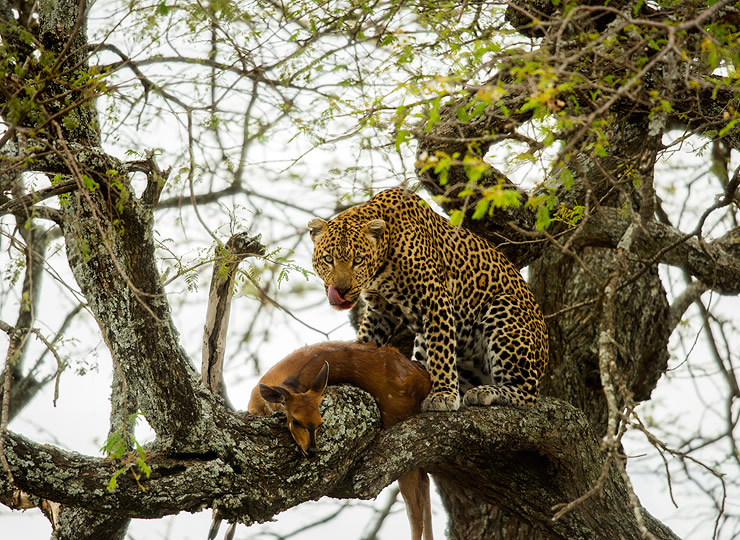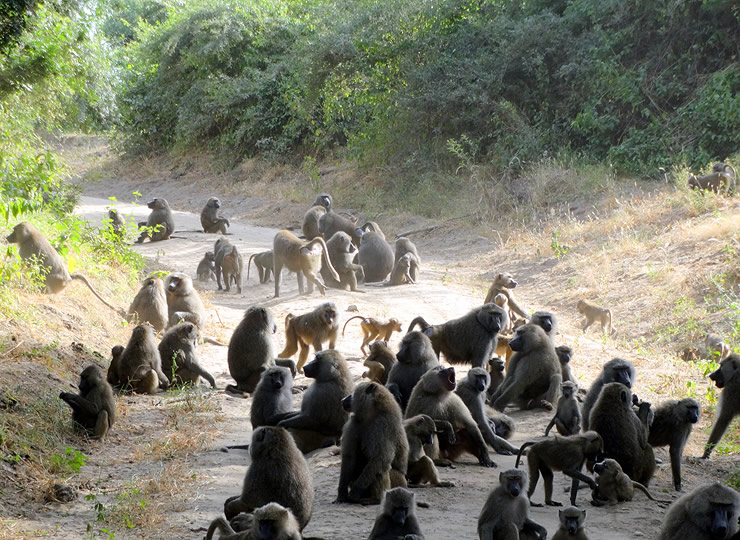Leopard
Panthera pardus

The leopard, a top predator in many African ecosystems, plays a critical role in controlling the size of baboon populations. Without leopards, large numbers of baboons can wreak havoc on habitats.
Range map of the leopard

Unlike other large cats, leopards drag their prey into trees before eating. Photo credit: iStock/Getty Images Plus
Around the world, populations of top predators have been declining due to habitat loss, hunting, and poaching. Leopards — which are native to habitats in Africa and Asia that include deserts, savannas, mountains, and rainforests — are one major predator threatened with extinction.
Leopard (Panthera pardus)
As leopards have declined, populations of the species they prey on, such as baboons, have grown rapidly. From 1968 to 2004, for example, leopards disappeared from several national parks in the West African country of Ghana. Scientists recorded a 365% increase in the local baboon populations over this time.

Baboon population sizes exploded as leopards and other big cats declined. Photo credit: iStock/Getty Images Plus
With fewer leopards, baboons not only increase in number but also behave differently. They spend more time on the ground than in the safety of the trees, eating more of the eggs of ground-nesting birds and raiding human crops. Baboons also eat a much larger variety of things than their predators do, including insects, birds, eggs, reptiles, mammals, fish, and fruits. When baboon populations grow, they eat more of all of these things, which has large effects on the ecosystem.